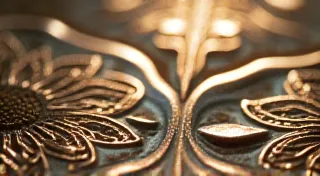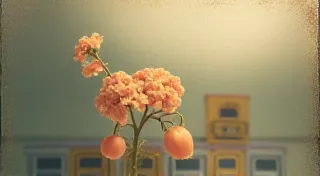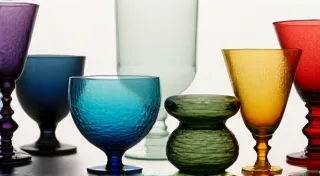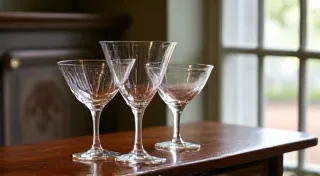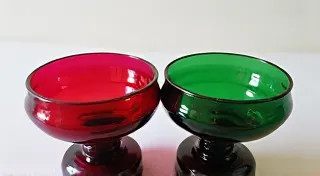Transferware Glassware: History and Identification
Transferware glassware holds a unique charm and appeal within the world of antique collectibles. It’s more than just pretty; it represents a fascinating intersection of industrial innovation, artistic design, and evolving tastes throughout history. This article will delve into the history of transferware on glass and provide you with the knowledge to identify and appreciate these beautiful pieces.
What is Transferware? A Brief History
The term "transferware" refers to a printing technique that allowed for the mass production of decorative patterns on ceramics and glass. It emerged in the late 18th century, primarily in England, as a response to the increasing demand for affordable, decorated tableware. Prior to transferware, hand-painting designs on ceramics was a time-consuming and expensive process, restricting decorated pieces to the wealthier segments of society.
The process itself is quite ingenious. First, an engraver would create a detailed design on a copper plate. This plate would then be inked and pressed onto paper, transferring the image. This paper transfer was then applied to the surface of the ceramic or glass item and, through a chemical process, the image would be permanently transferred. The original paper would be removed, leaving the design fixed to the piece.
Initially, transferware designs were often copies of expensive hand-painted Chinese porcelain, a trend popular amongst European collectors. However, as the technique evolved, artists began creating entirely original patterns reflecting British landscapes, historical scenes, and flora and fauna. The Victorian era saw a flourishing of transferware production, with countless patterns and variations created.
While originating primarily in England, transferware production spread to other countries, including the United States, Germany, and France, each adding their own unique styles and characteristics. Understanding the history of glass production, including marks found on pieces, can be incredibly helpful in dating transferware; you might find decoding common marks on antique glassware a useful starting point.
Identifying Transferware Glassware Patterns
Identifying transferware glassware can be a rewarding, but sometimes challenging, pursuit. Here’s a guide to help you begin:
1. Observe the Design
The design itself is the most obvious clue. Common transferware motifs include:
- Landscapes: British countryside scenes, rural villages, coastal views.
- Historical Scenes: Depictions of historical events, battles, or figures.
- Figurative: Portraits, genre scenes of everyday life.
- Botanical: Flowers, foliage, fruit.
- Hunting & Sporting Scenes: Foxes, hounds, horses, and other hunting-related imagery.

2. Consider the Color Palette
Early transferware often featured monochromatic designs, typically in black or brown on a white background. Later pieces incorporated a wider range of colors, including blue, green, red, and ochre. The colors themselves can sometimes help narrow down the era and manufacturer. Some patterns can be incredibly popular, like those found in Depression glass patterns. While distinct in production eras, appreciating the design motifs of different styles adds richness to any collector’s eye.
3. Examine the Backstamp
The back of the glassware is a vital source of information. Look for a maker’s mark, often referred to as a backstamp. Even if the mark is faded or incomplete, it can provide clues about the manufacturer and the date of production. Common British manufacturers included Wedgwood, Staffordshire Pottery, and Coalbrookdale. American manufacturers included various potteries in Pennsylvania and Ohio.
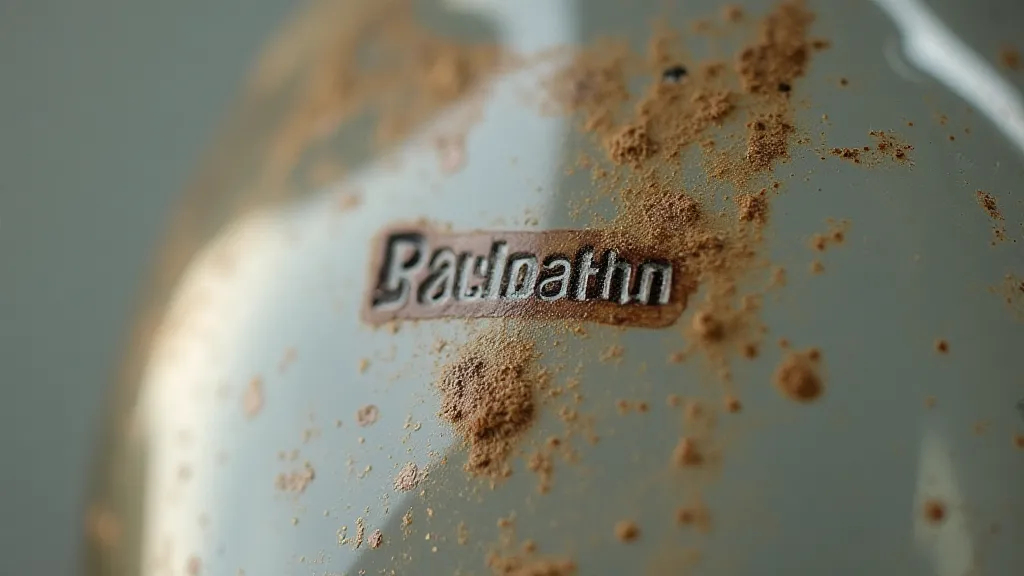
4. Note the Type of Glassware
Transferware was applied to a wide variety of glassware items, including plates, bowls, pitchers, cups, and goblets. The form itself can provide context. For example, a large pitcher might be part of a formal table setting, while a smaller cup might have been used for individual servings. Identifying the style of a piece of glass can sometimes require specialist knowledge. Many patterns are beloved, and knowledge of identifying Identifying Rose Pattern Glassware helps expand your appreciation.
5. Research Specific Patterns
Once you have gathered as much information as possible, begin researching specific patterns. Numerous books and websites are dedicated to identifying antique glassware patterns. Be prepared to compare your piece to known patterns and variations.
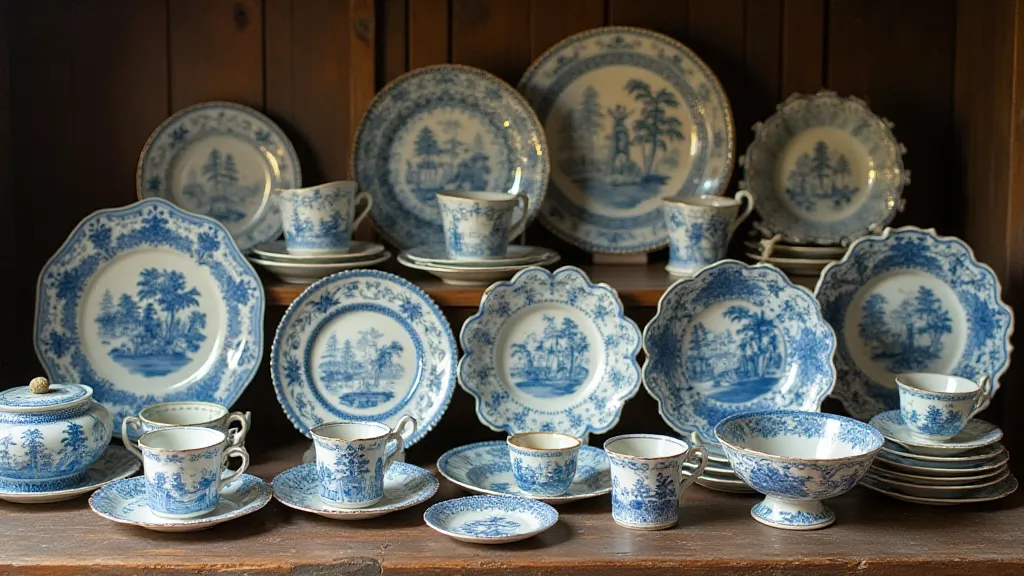
Valuing Transferware Glassware
The value of transferware glassware is determined by several factors, including:
- Rarity: Scarce patterns and variations command higher prices.
- Condition: Pieces in excellent condition are generally more valuable.
- Manufacturer: Certain manufacturers are more sought after by collectors.
- Demand: The current popularity of a particular pattern influences value.
- Completeness: Complete sets or matching items are more valuable than individual pieces.
The legacy of certain glass manufacturers can be substantial, and understanding their history is valuable for collectors. The story of The Legacy of Mosser Glass provides a fascinating look at American glass production and the distinctive patterns that emerged. Knowing about manufacturing techniques and eras informs our understanding of scarcity and collectibility.
Collecting and Caring for Transferware Glassware
Beyond identification, understanding how to care for and preserve your transferware collection is crucial. While seemingly durable, these pieces are susceptible to damage over time. Direct sunlight can fade the transfer designs, while sudden temperature changes can cause cracking. Gentle cleaning with mild soap and water is recommended; avoid abrasive cleaners that can strip the decoration.
Displaying your collection thoughtfully can also enhance its longevity. Consider using padded shelves or glass cases to minimize the risk of accidental breakage. Regular dusting prevents the buildup of grime, which can obscure the intricate details of the transfer designs. Furthermore, storing individual pieces wrapped in acid-free tissue paper prevents scratching and provides an added layer of protection.
Exploring Rare and Coveted Transferware Patterns
Certain transferware patterns are highly sought after by collectors due to their rarity, historical significance, or exceptional artistry. These patterns often command premium prices at auction and antique shows. Examples include the "Willow" pattern, originating from the 18th century and depicting a Chinese legend, and various patterns commemorating significant historical events, such as the coronation of Queen Victoria.
The study of transferware also extends to understanding the nuances of design variations. Minor differences in color, detail, or backstamp can significantly impact a pattern's value. Collectors often spend years meticulously researching and cataloging these variations, building comprehensive collections that showcase the breadth and depth of transferware artistry. The historical context and artistry contribute significantly to a piece’s appeal, making the search for rare examples a rewarding pursuit. Deeper appreciation of the artistic processes involved further enhances the value for serious collectors.
The emergence of online communities and forums has fostered a vibrant culture of transferware collecting. Enthusiasts share information, trade pieces, and collaborate on research projects, contributing to a deeper appreciation for this fascinating art form.
Often, the allure of transferware lies not just in the designs themselves, but in the stories they tell. Collectors are captivated by the narratives woven into these pieces - tales of faraway lands, historic events, and the lives of those who used them generations ago. Each chip, crack, and faded hue becomes a silent testament to a bygone era, sparking curiosity and imagination. Many collectors enjoy learning about the background stories of their pieces.
Beyond the practical aspects of identifying and valuing transferware, there's a profound sense of connection to the past that makes collecting these pieces so rewarding. It's a journey of discovery that allows us to step back in time and appreciate the artistry and craftsmanship of a bygone era. Each piece is more than just an object; it's a window into a world of history, culture, and beauty.
In conclusion, identifying and collecting transferware glassware is a journey of discovery. By understanding the history, learning to recognize patterns, and appreciating the craftsmanship, you can enjoy the beauty and charm of these delightful antique treasures. It’s a pursuit that combines historical insight, artistic appreciation, and the thrill of the hunt, offering endless rewards for those willing to delve into its captivating world.

